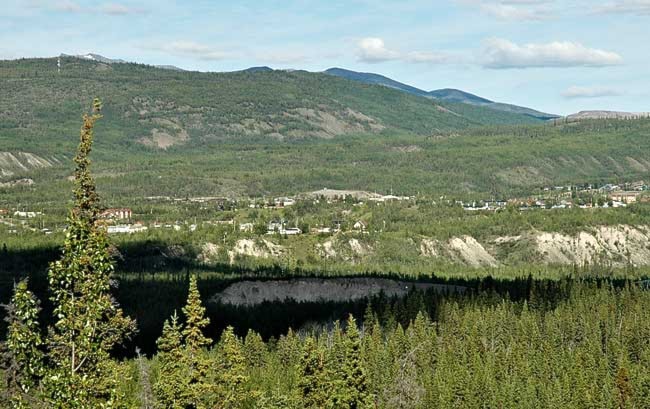After nearly two decades of caring for the abandoned Faro mine site, the federal and territorial governments are getting closer to coming up with a remediation plan.
Starting this month, the Yukon government is scheduling public consultation meetings in communities around the territory to talk about the future of the site.
The meetings are a required step before the both governments can submit a remediation plan to the Yukon Environmental and Socio-Economic Assessment Board next year, said Dustin Rainey, the Yukon government’s senior project manager.
Once the largest open-pit lead-zinc mine in the world, the Faro mine was abandoned in 1998 leaving behind 70 million tonnes of tailings and 320 million tonnes of waste rock, which have the potential to leach heavy metals and acid into the surrounding land and water, according to Indigenous and Northern Affairs Canada.
Various government departments have been maintaining the site since its closure.
“Care and maintenance, in the Faro sense, is its own industry unto itself,” Rainey said.
The mine site still employs dozens of people. The water treated there is about equivalent to the amount of water the City of Whitehorse uses every year, he said.
While work to date has focused primarily on the water, the remediation plan will include work on the contaminated land.
Instead of moving the contaminated land around, they’ve decided to go with a “stabilize in place” approach, Rainey said.
Any of the dams currently in place will be upgraded. The waste rock piles “will be re-sloped (and) flattened, to make sure that they’re more stable,” he said. The piles will then be covered “to isolate that mine waste from the atmosphere and the environment.”
More details about what the land will look like and what it could be used for will be available once the plan is submitted to the assessment board next year.
No matter how much work is done to clean up the Faro site, it doesn’t appear government will be able to wash its hands of the project completely.
Rainey said there will always have to be someone monitoring the water. As well, the huge pit, which is more than a square kilometre in size, is never going to be filled in, he said.
“There always will likely be places that are just unsafe for people to access on the site and we’ll have to control that just to protect people’s own health and safety.”
The fact that the site may need to be cared for “forever” concerns Lewis Rifkind with the Yukon Conservation Society.
“Who’s going to pay for this? Are we going to pay for it forever?” he said.
“Every dollar we spend on water treatment on this mine site is a dollar less for schools, hospitals, roads and — it’s unusual for YCS to say this — it’s a dollar less for investing in other economic development opportunities.”
The federal government pays the bills for the work at the mine site. The territorial government is in charge of most on-site management.
Indigenous and Northern Affairs Canada estimates it has spent $350 million on the site since 1998. That includes $150 million on care and maintenance.
There’s no word on how much the department plans to spend on remediation and future monitoring. No one from INAC was available to comment for this story.
Rifkind said he’s glad the plan is heading towards the Yukon assessment board because that will mean more transparency.
“As soon as you start putting stuff into YESAB and into the water board, a lot of documentation is available and you get a chance to ask questions.”
There are still concerns about what is on the site and what is flowing off, he said.
Since about 2013 high levels of zinc have been seeping out into the north fork of Rose Creek which flows past the site. The numbers continue to be high during the winter, Rainey said.
“As the waste rock dumps get older, it is expected that seepage will increase, which will damage water quality and impact fish and their habitat. Environment and Climate Change Canada has called for immediate attention to this issue,” according to federal government documents.
According to the documents the plan is to realign the creek to try and separate the mine’s water from the ground water for treatment. That’s scheduled for 2018.
Actual remediation isn’t expected to start until 2022 once the assessment board has approved a plan and the government gets a water licence.
Community meetings about remediation have been scheduled for Ross River on June 19 and Faro on June 20. More meetings will be happening in Pelly Crossing, Watson Lake, Carmacks and Whitehorse according to the territorial Department of Energy, Mines and Resources. Those meetings haven’t been scheduled yet.
The Town of Faro has seen a dramatic drop in population since the mine closed.
Chief Administrative Officer Ian Dunlop said the remediation plans could benefit Faro’s economy.
“It sounds like there could be over 100, possibly 150, workers that would be involved in that over a long term of about 15 years or so. So that would definitely bring a lot of economic stability to the town.”
Contact Ashley Joannou at ashleyj@yukon-news.com
